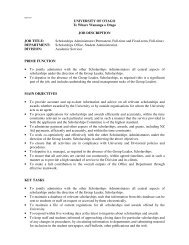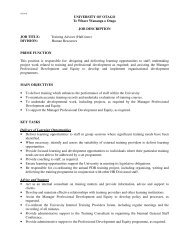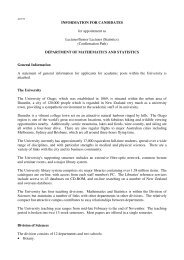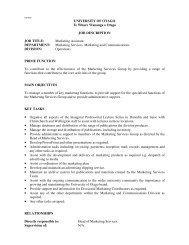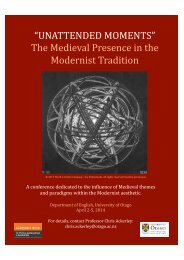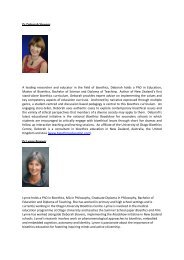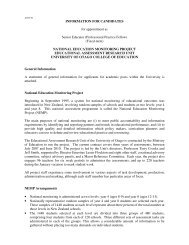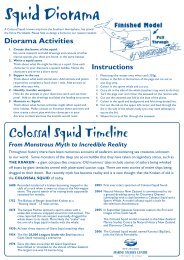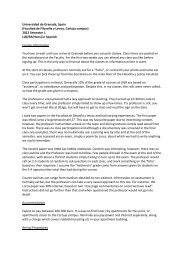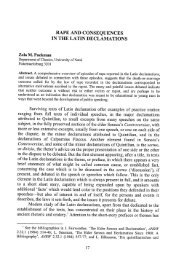CREATIVE IMITATIONS AND APPROPRIATIONS - University of Otago
CREATIVE IMITATIONS AND APPROPRIATIONS - University of Otago
CREATIVE IMITATIONS AND APPROPRIATIONS - University of Otago
You also want an ePaper? Increase the reach of your titles
YUMPU automatically turns print PDFs into web optimized ePapers that Google loves.
ABSTRACTS<br />
Adapting Antony And Cleopatra: How A Marriage Of<br />
Convenience Became The Greatest Love Story Ever Told<br />
Dean Alexander<br />
In the blurb to Cecil B. DeMille’s Cleopatra (1934), the Egyptian queen, played by<br />
iconic 30s star Claudette Colbert, is described as “man hungry.” This unflattering<br />
description encapsulates the general perception <strong>of</strong> Cleopatra in popular culture:<br />
she was a femme fatale, a beautiful seductress who ensnared the most powerful<br />
men in the world by the force <strong>of</strong> her alluring femininity. However, the historical<br />
Cleopatra was markedly different from her stage and film personae. Indeed, the<br />
Greek biographer and philosopher Plutarch relates that she was a clever polyglot<br />
who had an angelic voice (Plut. Ant. 27.2-4). Her beauty, by contrast, was not<br />
“incomparable.”<br />
This paper will focus on another aspect <strong>of</strong> the romanticized legacy <strong>of</strong> Cleopatra:<br />
her marriage to Marc Antony. What was historically a marriage <strong>of</strong> convenience,<br />
poets, dramatists and filmmakers transformed into the “greatest love story <strong>of</strong> all<br />
time.” Using Plutarch’s Life <strong>of</strong> Antony, the story <strong>of</strong> Antony and Cleopatra (a story<br />
re-interpreted by such literary figures as Boccaccio, Chaucer and Shakespeare)<br />
becomes a tragic tale <strong>of</strong> ill-fated love. It is this that is emphasised in the films<br />
examined: Cleopatra (1934); Cleopatra (1963). Ultimately, I intend to trace the<br />
evolution <strong>of</strong> this remark-able transformation.<br />
Adaptating [sic] Texts: the Beauty <strong>of</strong> Machinic Perfection<br />
and Human Error<br />
David Ciccoricco<br />
This paper aims to address “adaptation” in the context <strong>of</strong> literary texts, both as<br />
they migrate from one medium (print) to another (digital), and how works <strong>of</strong><br />
digital-literary art themselves change (kinetically/visually/cinematically/virtually)<br />
on the screen as we read them. More specifically, I will invoke Lev Manovich's<br />
celebrated but blatantly instrumental notion <strong>of</strong> a new avant-garde – which he<br />
locates in computing and s<strong>of</strong>tware potential – to consider what is at stake when<br />
we effectively “technologise” operations <strong>of</strong> the imagination, while still maintaining<br />
5




